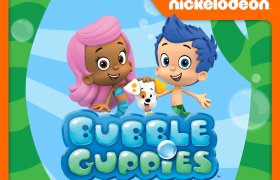How to Encourage Critical Thinking in Children

Critical thinking is an important skill for children to learn it can help them with problem-solving, innovation, and being creative. Learning to think critically can also help your child as they transition into adulthood to be wary of opportunities that are too good to be true, to assess their situation factually, and to thrive in our current world.
In the information age, the ability to access, process, and analyze information has never been more important. The amounts of good information and bad information are almost balanced and being able to sift through what is presented to find the truth is a skill many are lacking. Learning to make sense of the senseless is almost more important than any other thing your child will learn to do.
Critical thinking is the ability to look at a problem or situation, and break it down into small parts and then test each part until the full picture is fully understood and the information gained can be acted upon.
Early learners can practice critical thinking skills through games and other types of structured experiences, where there is a goal at the end. They also learn a lot through unstructured play as well. The amount of learning that goes on in a sandbox is often discounted by people who think it’s just “playing” but they couldn’t be further from the truth. In addition to motor and sensory skills, your child is learning cause and effect, how to modify their methods to achieve goals, and if playing with other children the social skills needed to navigate touchy situations.
You can help foster creative thinking in preschoolers by turning their questions back on them. The litany of “whys” can get overwhelming and you may feel the need to just give pat answers most of the time, but asking them for their thoughts can lead you both on a journey of deeper understanding. If they ask you why something is the way it is, maybe ask them why they think it is and then help them get a coherent view of it by asking more and more leading questions until they figure it out. While this approach isn’t appropriate for every situation, it can be a fun pastime if you find situations where it works.
As children age, you can begin to give them tiny projects to complete that require them to think more thoroughly through what they are doing. Making a weekly dinner plan can be a fun way to learn how to allocate resources. Put a few modifiers on the ask and let them try to think it through. For example, tell them you need to have a meal on Tuesday that uses some of the leftovers from Monday. Give them any resources they may need like cookbooks or access to previous grocery lists. The important thing is that they are able to find information, and use that information to come up with a solution. They may need more help from you than you realize, but it’s also beneficial to hang back and let them work through any mild frustration they encounter.
 Teens can start to apply critical thinking to current events, asking questions and listening is always better than telling them what the answer is. While you may want to instill your values on certain issues, being able to demonstrate them through showing they are built on sound logic and that your views are beneficial will go a lot further than just trying to force the issue. If you’ve raised your child to be able to think critically this will go a long way in helping them have informed opinions on almost any topic.
Teens can start to apply critical thinking to current events, asking questions and listening is always better than telling them what the answer is. While you may want to instill your values on certain issues, being able to demonstrate them through showing they are built on sound logic and that your views are beneficial will go a lot further than just trying to force the issue. If you’ve raised your child to be able to think critically this will go a long way in helping them have informed opinions on almost any topic.
Tips for any age group:
1. Slow down.
Thinking can take time, so give your child adequate time to really understand the question or problem and then more time to work through what may be multiple drafts of a solution. Snap decisions are fast, good decisions take time.
2. Be relevant.
Whatever your child is thinking through whether it’s school work or a personal project, relating it back to something they are already familiar with is a key skill to learn so that they can make baby steps into a new zone of information. Asking them questions about other things that they have encountered similar to this might help them spark some ideas to try.
3. Be purposeful.
Take a note of what skills your child already has and what skills are necessary for any projects, problems, or experiments you’re hoping to let them try out. Make sure you’re not asking too much or too little, give them room to succeed but also a little bit of room to grow. If you are careful about not letting them get in over their head, but also not jumping in at the first sign of trouble you can strike a balance that leads to growth.
4. Don’t be afraid to be silly.
Sometimes in the most frustrating times, it is helpful to goof off a bit. Ask your child “what would be the silliest way to solve this problem?” or “what could happen that would make this so much worse?” Approaching a problem from different angles can sometimes get your child out of the mode of lazy thinking and enable them to really be creative in their problem-solving.
5. Be supportive.
Not every idea is a winner, but as long as your child is still trying they are still learning. Nobody gets every answer perfectly right on their first time out, especially when they are new to a concept. The emphasis should always be on the effort over the results.
Finding new outlets for critical thinking will become second nature once you start, but if you’re struggling in the beginning, consider visiting the library to check out books on critical thinking exercises for children or even just making up a bizarre problem and trying to get them engaged in solving the problem. “What if we came home and there was an elephant in the living room?” is a great question to ask any kid to get them started on a path of thinking like a problem solver.







